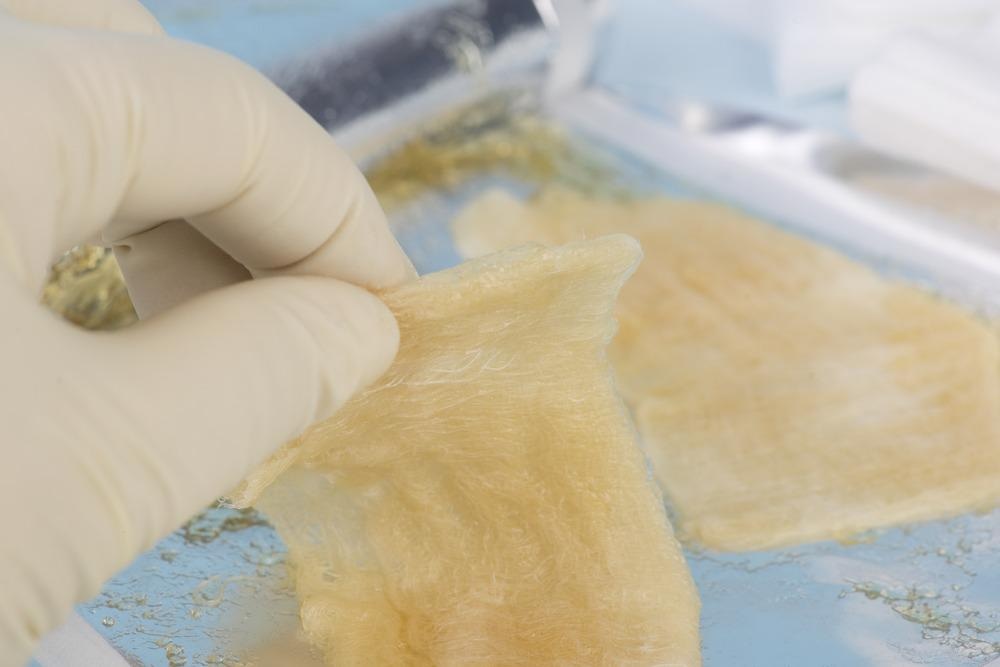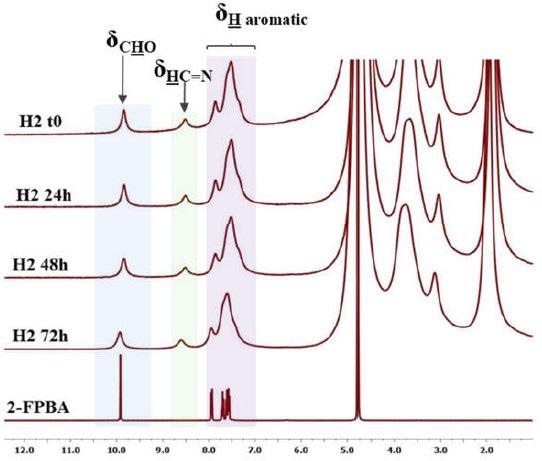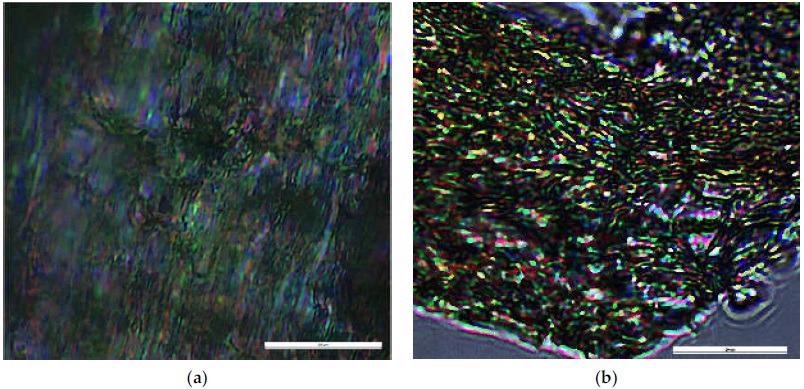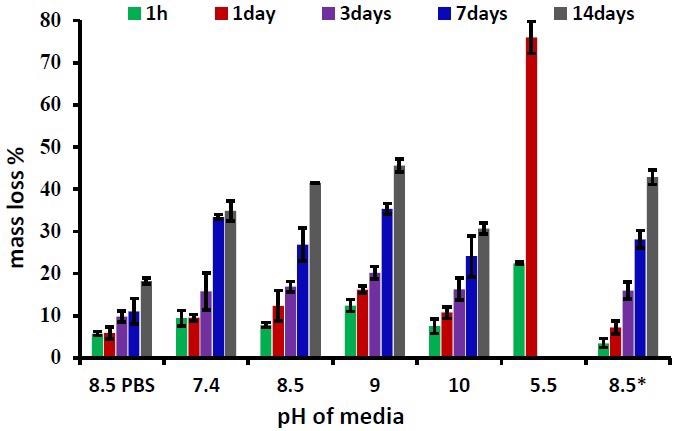.jpg) By Susha Cheriyedath, M.Sc.Reviewed by Skyla BailyFeb 17 2022
By Susha Cheriyedath, M.Sc.Reviewed by Skyla BailyFeb 17 2022In a recent research paper published in the journal Gels, researchers developed a biocompatible hydrogel made from chitosan. Chitosan, a polysaccharide, in the form of hydrogels, exhibits promising potential for biological applications such as dressing wounds. The team also analyzed the toxicity, bioabsorbable character, and antimicrobial activity of the chitosan-based product.

Sterile hydrogel dressing. Study: Biocompatible Chitosan-Based Hydrogels for Bioabsorbable Wound Dressings. Image Credit: MedstockPhotos/Shutterstock.com
The researchers were able to formulate a relationship between biodegradation and the pH of the wound exudate. The results showed that chitosan hydrogels can be utilized for dressing and safer and faster management of wounds.
Background
Nanotechnology has led to recent advancements in the medical industry. The necessity of a better wound treating mechanism for faster recovery from burns or injury has prompted scientists to work on alternative solutions. One such approach is using hydrogels which could provide hydration to the injury site and can absorb excess fluids. Hydrogels are better than conventional methods like adhesive bandages, which cause damage to the infected site.

H-NMR spectra of the hydrogel during hydrogelation, from hydrogel occurrence (t0) to 72 h, compared with the 2-FPBA reference. Image Credit: Lungu, R et al., Gels
Supramolecular hydrogels from chitosan are actively investigated by researchers due to their use in the biomedical field. However, their biodegradation rate as a function of pH has not been studied extensively. In this study, researchers presented the properties of chitosan-based hydrogels, including their low toxicity, antimicrobial activity, and bioabsorbable nature. The obtained results validate that it is safe, antimicrobial, and acts swiftly to heal the tissue, which makes it a superior option for treating wounds.
About the study
The group synthesized hydrogels made from chitosan incorporating 2-formyl-phenyl-boronic acid to confer antimicrobial activity. The antimicrobial activity was checked against different pathogens. Various characterization techniques such as Fourier transform infrared (FTIR) and nuclear magnetic resonance( NMR) spectroscopy was used to study the properties of the produced hydrogels.

Images of the hydrogel under polarized light (scale bar: 20 μm), acquired on (a) thick and (b) thin sample of hydrogel. Image Credit: Lungu, R et al., Gels
Cytotoxicity was checked against normal human dermal fibroblasts (NHDF). The pH, being a determining factor in wound healing, was studied for different values against different healing stages. The hydrogels were also analyzed using gravimetric measurements and scanning electron microscope (SEM) and the biodegradation of the chitosan-hydrogel was monitored. The study aimed to provide a non-infectious, faster healing, safe, and reliable method for wound dressing.
Observations
The chitosan-based hydrogel was made antimicrobial with the acid condensation reaction of chitosan with 2-formyl-phenyl-boronic acid in water. This made it possible to check whether its biodegradability depended on the pH. The inverted test confirmed the hydrogel state. The cytotoxicity against NHDF was also investigated for concentrations of 0.284 up to 0.004438% to test whether these hydrogels are safe. It was found that except for 0.284%, these hydrogels were safe to use.
The antimicrobial activity of pathogens Staphylococcus aureus, Escherichia coli, and Candida albicans against the hydrogel were tested and the hydrogel exhibited positive antimicrobial activity suggesting that it can provide an infection-free environment.
In the biodegradation experiment, lysozyme clearly influenced the biodegradation rate. When the pH was 5.5, which represents a normal dermis, the loss in mass at the site of injury was 75% on the first day, and a complete vanishing of skin epithelium was observed on the second day. The study also observed that the re-epithelization happens without traumatic debridement. This shows that hydrogels are helpful for faster wound healing without the formation of scars. The SEM images also confirmed that the biodegradation rate depends on the pH of the wound exudates.

The mass loss of hydrogel over 14 days, in lysozyme media (376 U/mL) of different pH (* indicates a lysozyme concentration of 4830 U/mL; 8.5PBS indicates the absence of lysozyme). Image Credit: Lungu, R et al., Gels
Conclusions
This study aimed to devise a better wound healing method using hydrogels of chitosan. They incorporated bio-absorbable and antimicrobial activity to the hydrogel by the acid condensation reaction of chitosan with 2-formyl-phenyl-boronic acid in water. The synthesized chitosan hydrogels exhibited antimicrobial activity against the pathogens S. aureus, E. coli, and C. albicans. The relationship between pH and biodegradability was confirmed by the study results. Although cytotoxicity against NHDF was observed at a concentration of 0.284%, the hydrogels were found to be safe to use at other concentrations.
The lysozyme plays an important role in biodegradation. The pH of around 5.5 indicates the normal dermis displayed completed healing in two days. This leads to a faster recovery rate compared to the present one and also reveals that re-epithelization happens without traumatic debridement suggesting a solution to end scar formation. SEM analysis also confirmed that pH was dependent on biodegradability. Taken together, the findings show that a rapid cure of wounds is possible without getting infected or scarring the tissue using the chitosan hydrogel produced in this study.
Disclaimer: The views expressed here are those of the author expressed in their private capacity and do not necessarily represent the views of AZoM.com Limited T/A AZoNetwork the owner and operator of this website. This disclaimer forms part of the Terms and conditions of use of this website.
Source:
Lungu, R.; Paun, M.-A.; Peptanariu, D.; Ailincai, D.; Marin, L.; Nichita, M.-V.; Paun, V.-A.; Paun, V.-P. Biocompatible Chitosan-Based Hydrogels for Bioabsorbable Wound Dressings. Gels 2022, 8, 107. https://www.mdpi.com/2310-2861/8/2/107